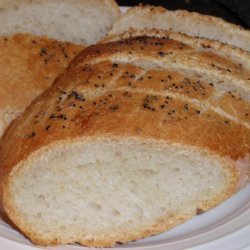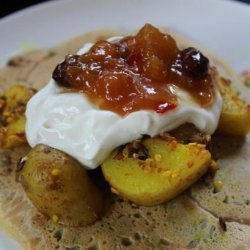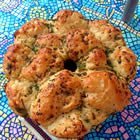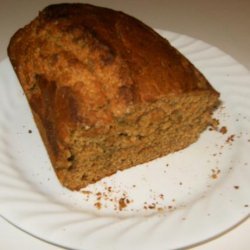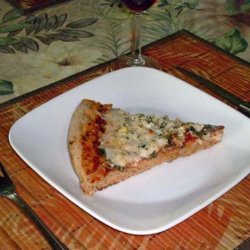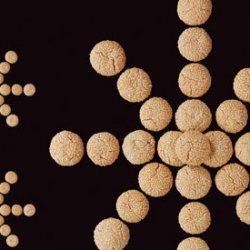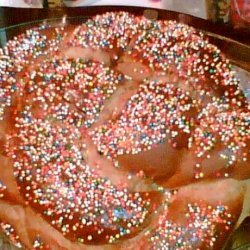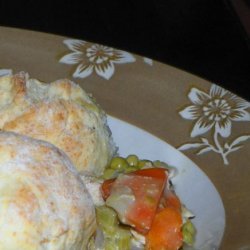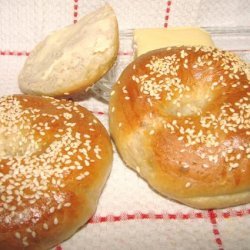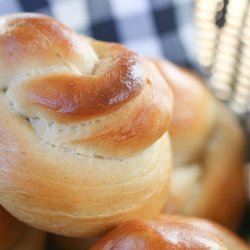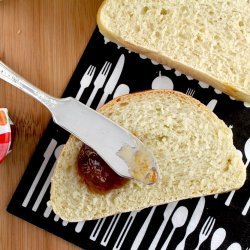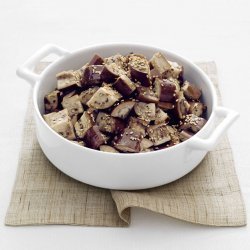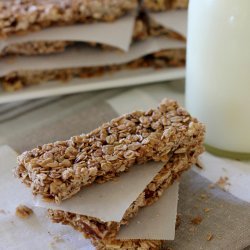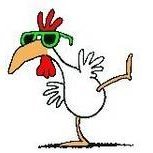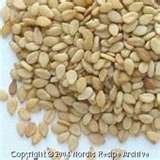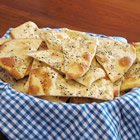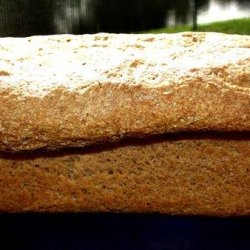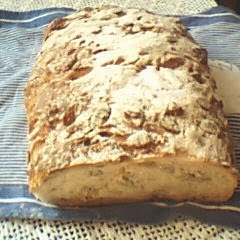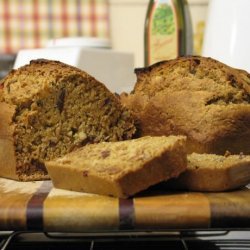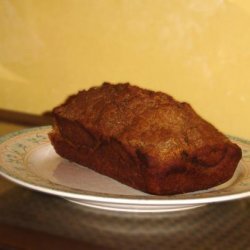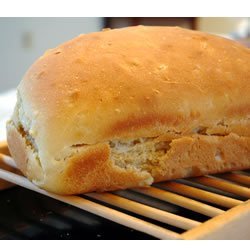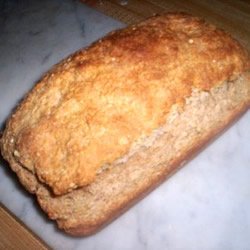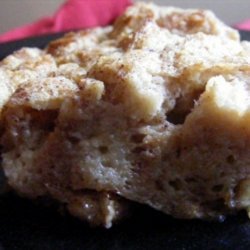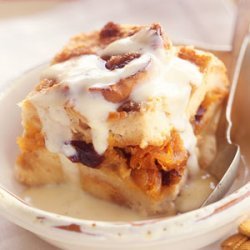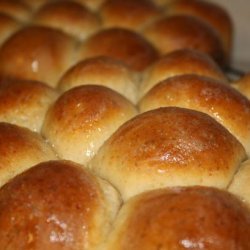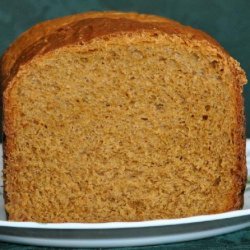Ingredients:
- 15 fl oz/ scant 2 cups (425 milliliters) water at blood heat plus 10 fl oz/1 1/4 cups (275 milliliters)
- sesame seeds , optional
Directions:
- When making Ballymaloe brown yeast bread, remember that yeast is a living organism. In order to grow, it requires warmth, moisture and nourishment. The yeast feeds on the sugar and produces bubbles of carbon dioxide which causes the bread to rise. Heat of over 122 degrees F/50 degrees C will kill yeast. Have the ingredients and equipment at blood heat. White or brown sugar, honey golden syrup, treacle or molasses may be used. Each will give a slightly different flavour to the bread. At Ballymaloe we use treacle. The dough rises more rapidly with 1 ounce (25 grams) yeast than with 3/4 ounce (20 grams) yeast.
- We use a stone ground wholemeal. Different flours produce breads of different textures and flavour. The amount of natural moisture in the flour varies according to atmospheric conditions. The quantity of water should be altered accordingly. The dough should be just too wet to knead - in fact it does not require kneading. The main ingredients - wholemeal flour, treacle and yeast are highly nutritious.
- Cook's Note: Dried yeast may be used instead of baker's yeast. Follow the same method but use only half the weight given for fresh yeast. Allow longer to rise. Fast acting yeast may also be used, follow the instructions on the packet.
- Cook's Note: The ingredients should all be at room temperature.
- Preheat the oven to 450 degrees F/230 degrees C/gas mark 8.
- Mix the flour with the salt. In a small bowl or mixing cup, mix the treacle with 15 fluid ounces/ scant 2 cups (425 milliliters) water and crumble in the yeast.
- Sit the bowl for a few minutes in a warm place to allow the yeast to start to work. Grease a 5 by 8-inch (13 by 20 centimeters) loaf tin with sunflower oil. Meanwhile, check to see if the yeast is rising. After about 4 or 5 minutes it will have a creamy and slightly frothy appearance on top.
- When ready, stir and pour it, with all the remaining 10 fluid ounces/1 1/4 cups (275 milliliters) water into the flour to make a loose, wet dough. The mixture should be too wet to knead. Put the mixture into the greased tin. Sprinkle the top of the loaves with sesame seeds, if you like. Put the tin in a warm place somewhere close to the cooker or near a radiator perhaps. Cover the tins with a tea towel to prevent a skin from forming. Just as the bread comes to the top of the tin, remove the tea towel and pop the loaves in the oven for 20 minutes, then turn the oven down to 400 degrees F/200 degrees C/gas mark 6 for another 40 to 50 minutes, or until it looks nicely browned and sound hollow when tapped. The bread will rise a little further in the oven. This is called oven spring . If, however, the bread rises to the top of the tin before it goes into the oven it will continue to rise and flow over the edges.
- We usually remove the loaves from the tins about 10 minutes before the end of cooking and put them back into the oven to crisp all round, but if you like a softer crust there's no need to do this.
Nutrition Facts
| Amount Per 1 Serving | |||
| Calories | 4864 Kcal (20365 kJ) | ||
| Calories from fat | 3674.25 Kcal | ||
| % Daily Value* | |||
| Total Fat | 408.25g | 628% | |
|---|---|---|---|
| Sodium | 2984.47mg | 124% | |
| Potassium | 3542.55mg | 75% | |
| Total Carbs | 224.49g | 75% | |
| Sugars | 3.18g | 13% | |
| Dietary Fiber | 76.62g | 306% | |
| Protein | 153.43g | 307% | |
| Iron | 26.1mg | 145% | |
| Calcium | 3598.9mg | 360% | |
| Amount Per 100 g | |||
| Calories | 563.99 Kcal (2361 kJ) | ||
| Calories from fat | 426.03 Kcal | ||
| % Daily Value* | |||
| Total Fat | 47.34g | 628% | |
|---|---|---|---|
| Sodium | 346.05mg | 124% | |
| Potassium | 410.76mg | 75% | |
| Total Carbs | 26.03g | 75% | |
| Sugars | 0.37g | 13% | |
| Dietary Fiber | 8.88g | 306% | |
| Protein | 17.79g | 307% | |
| Iron | 3mg | 145% | |
| Calcium | 417.3mg | 360% | |
* Percent Daily Values are based on a 2000 calorie diet. Your daily values may be higher or lower depending on your calorie needs.
Find out how many calories should you eat.
Get Your Recipe of Health!
Follow RecipeOfHealth on Facebook!


